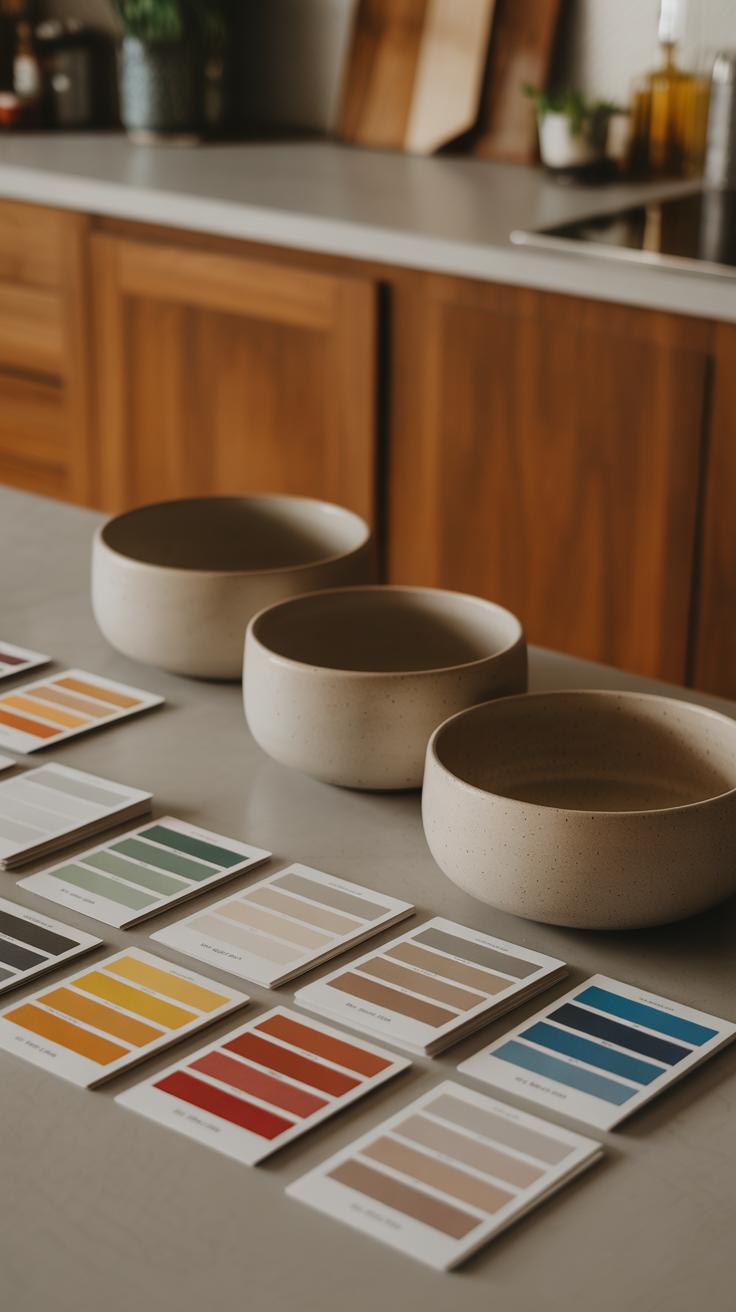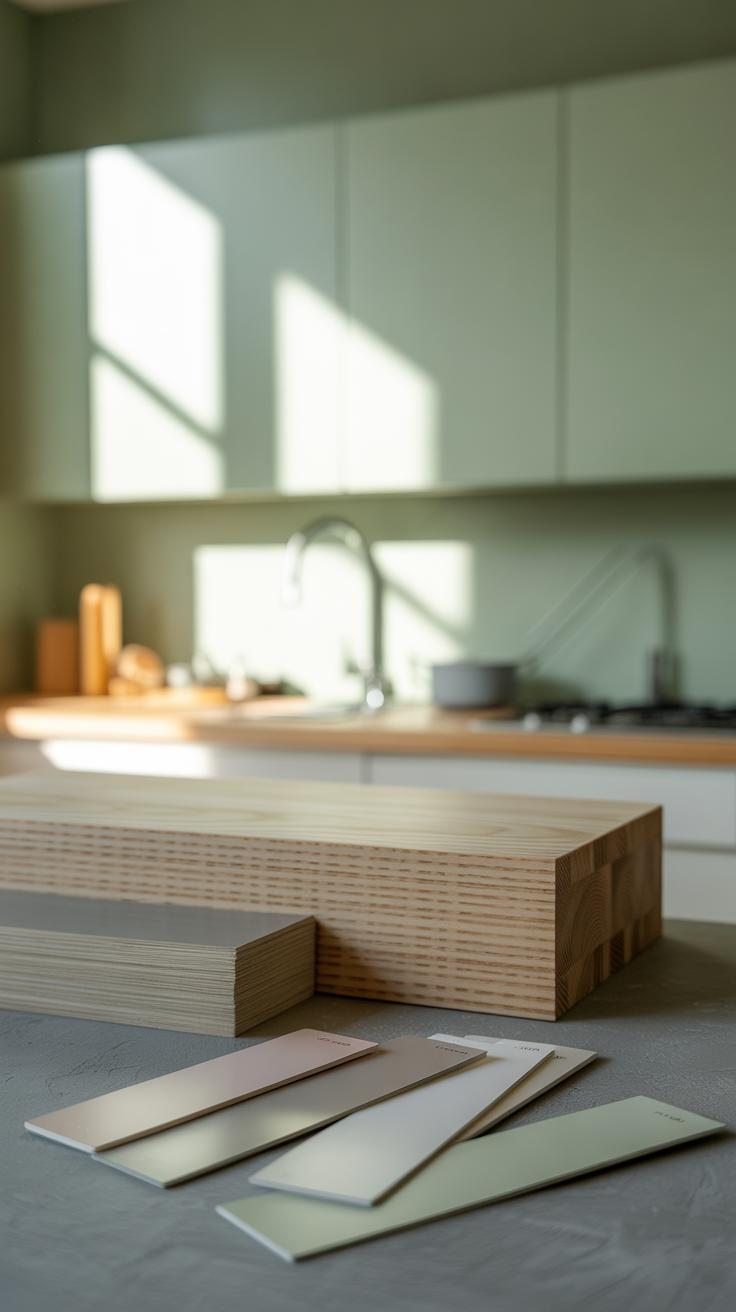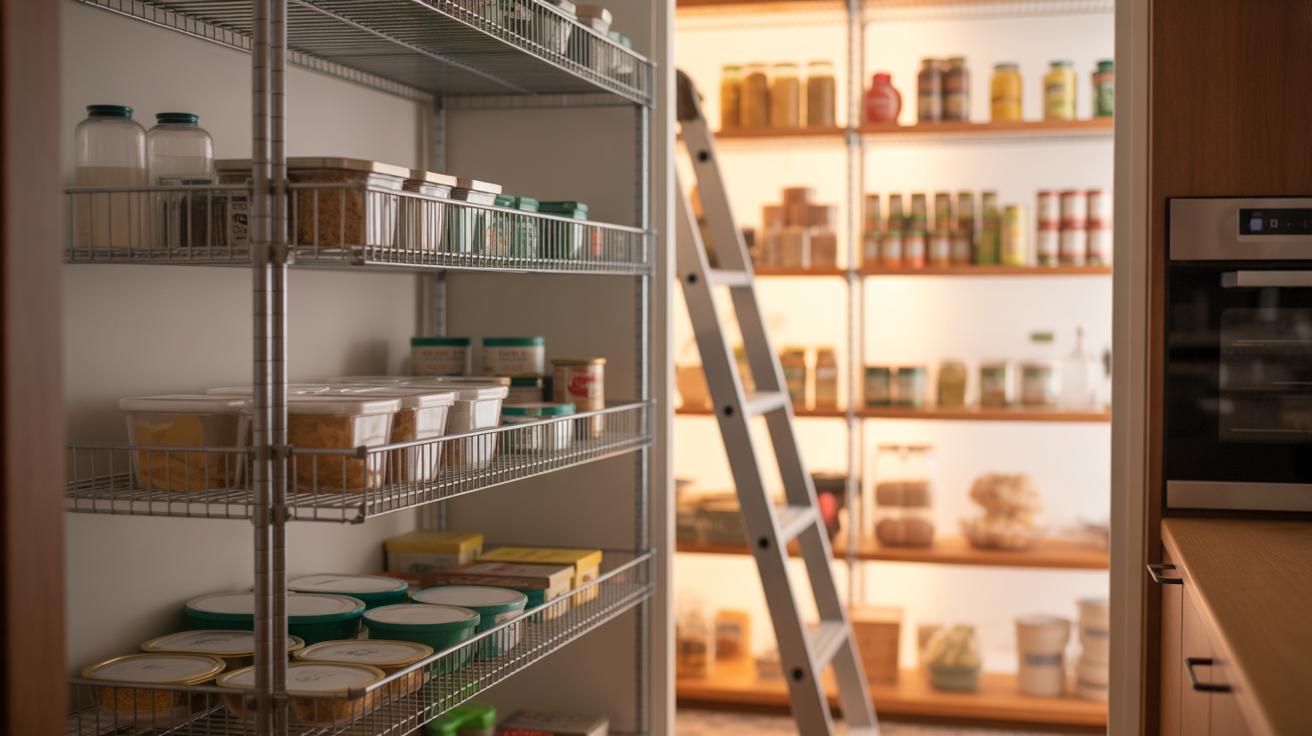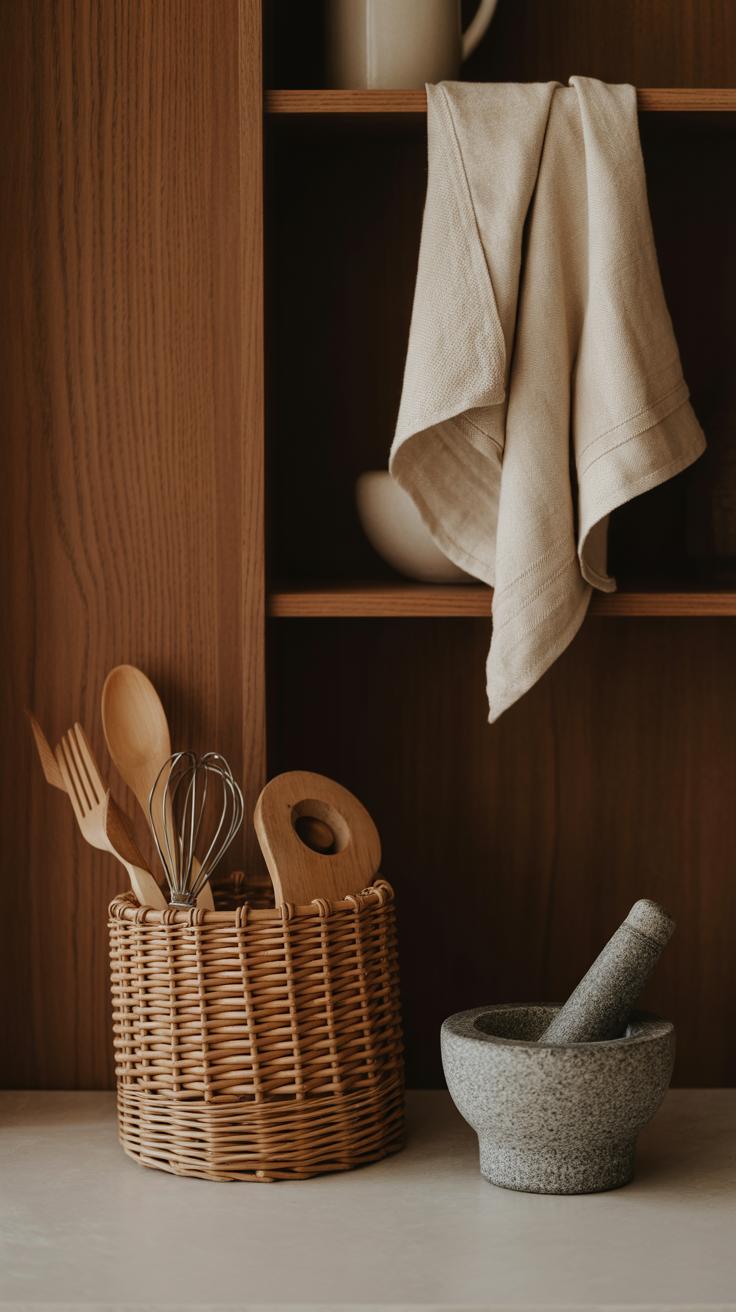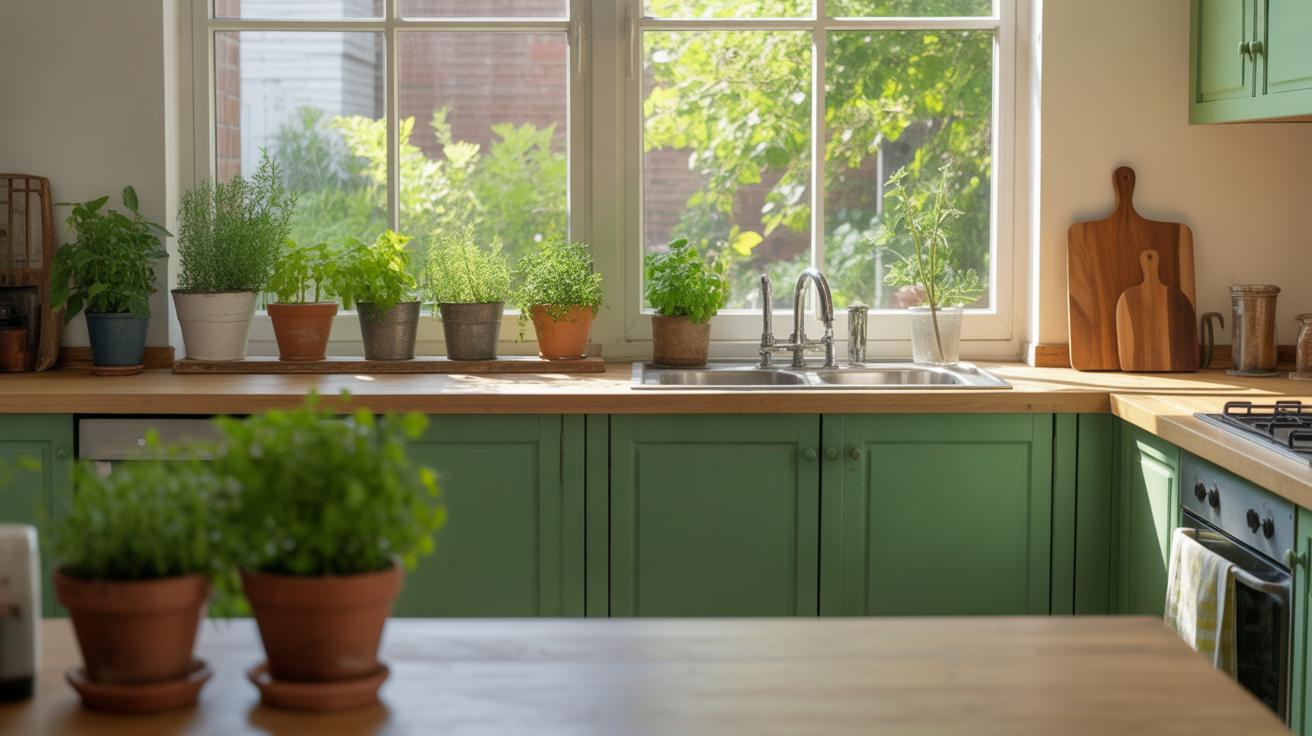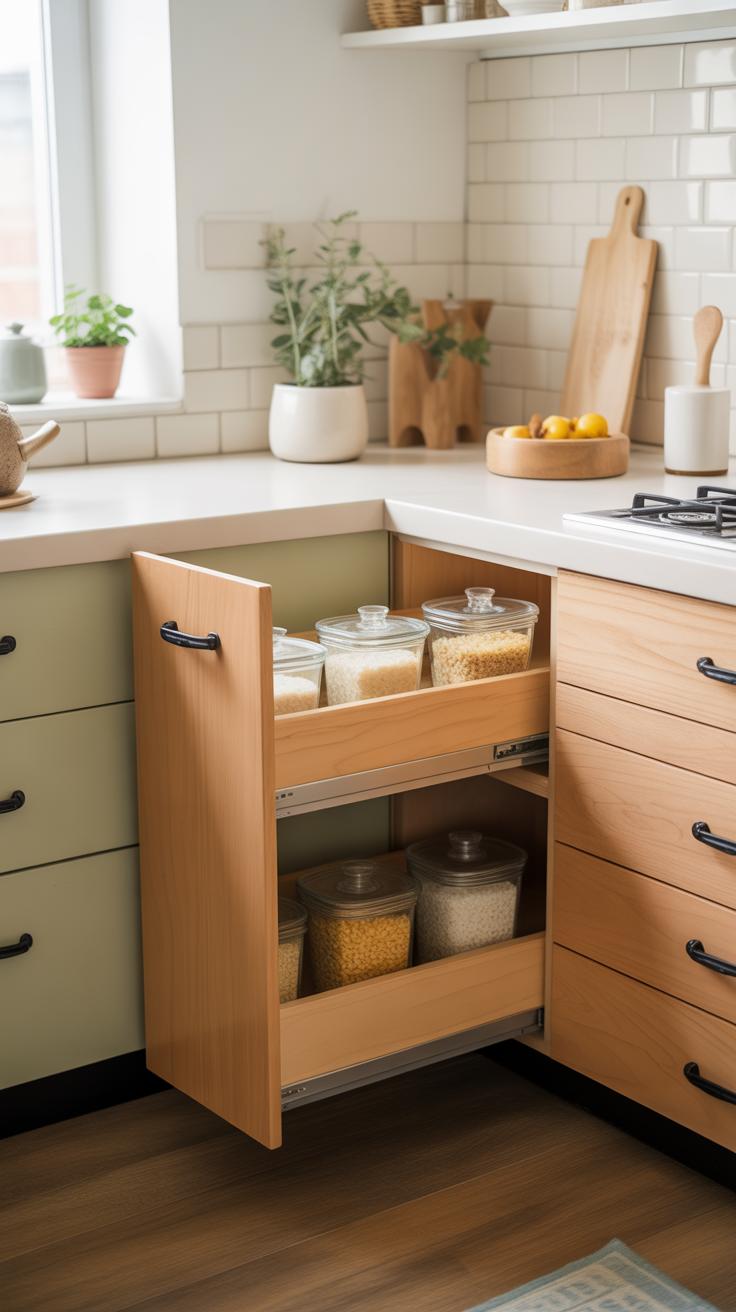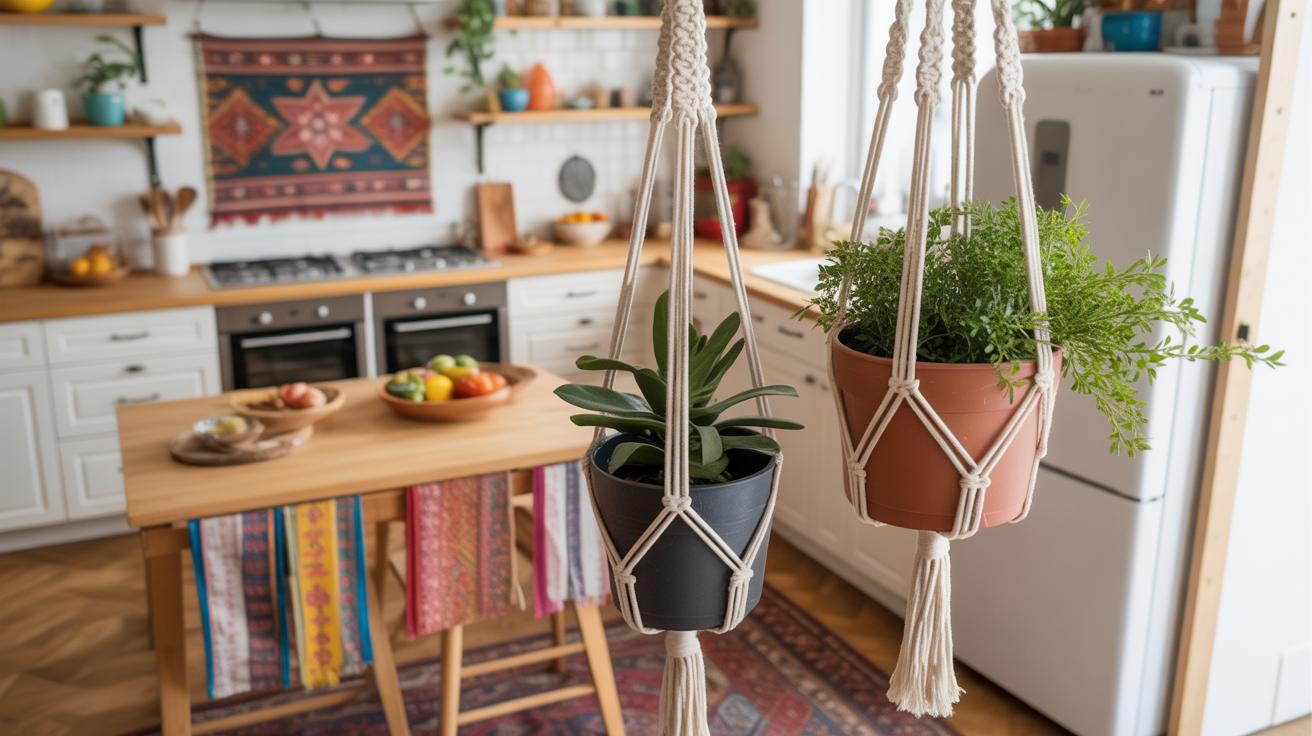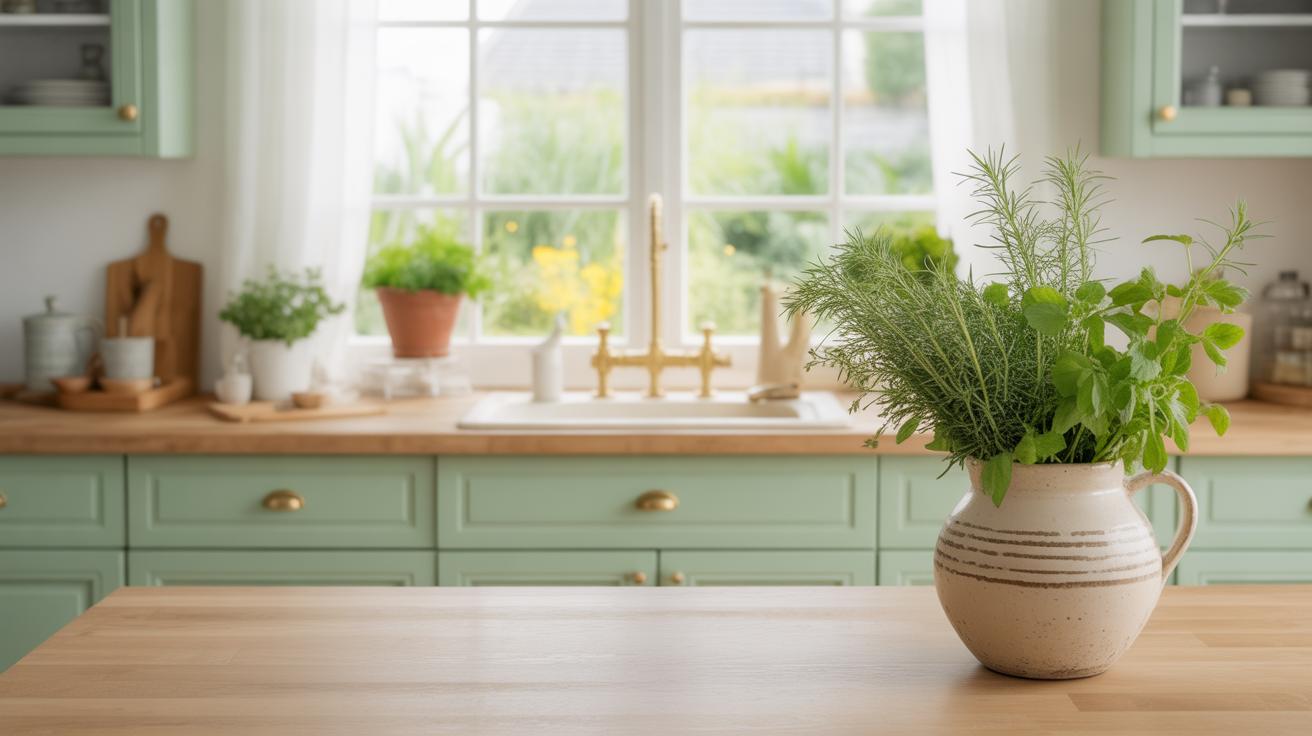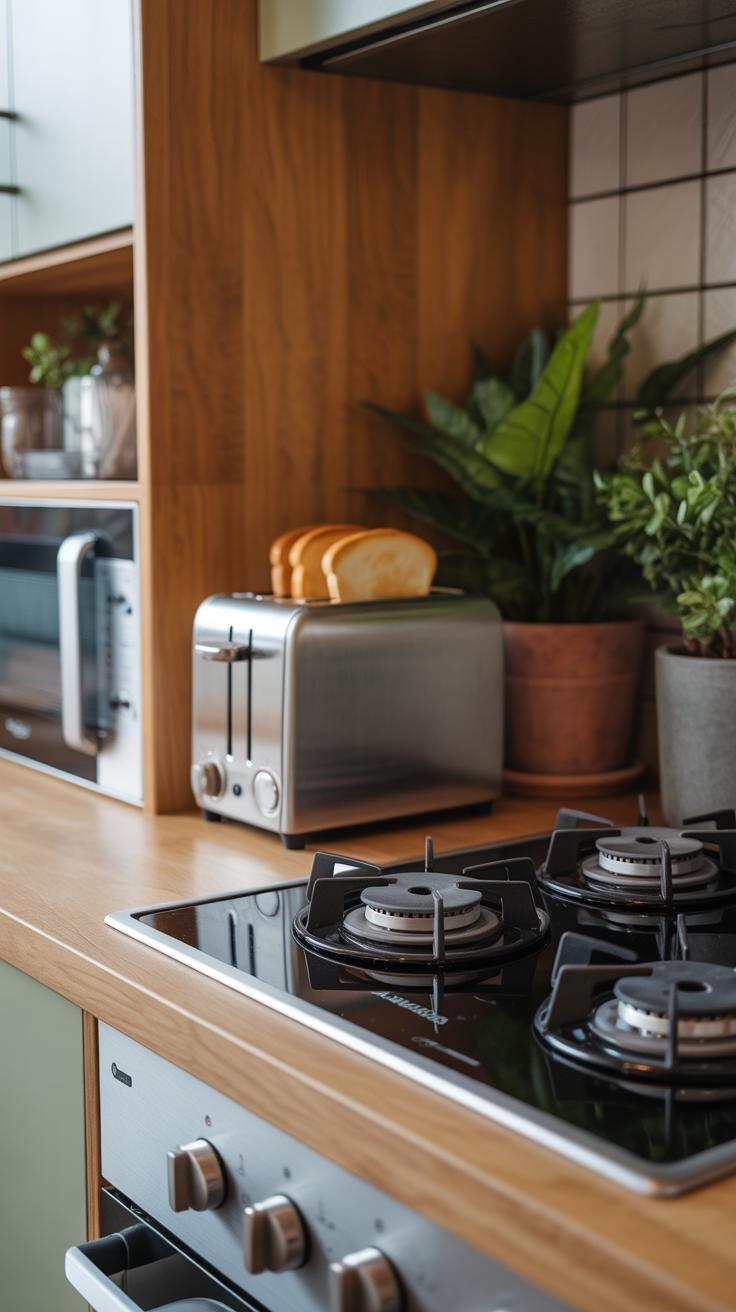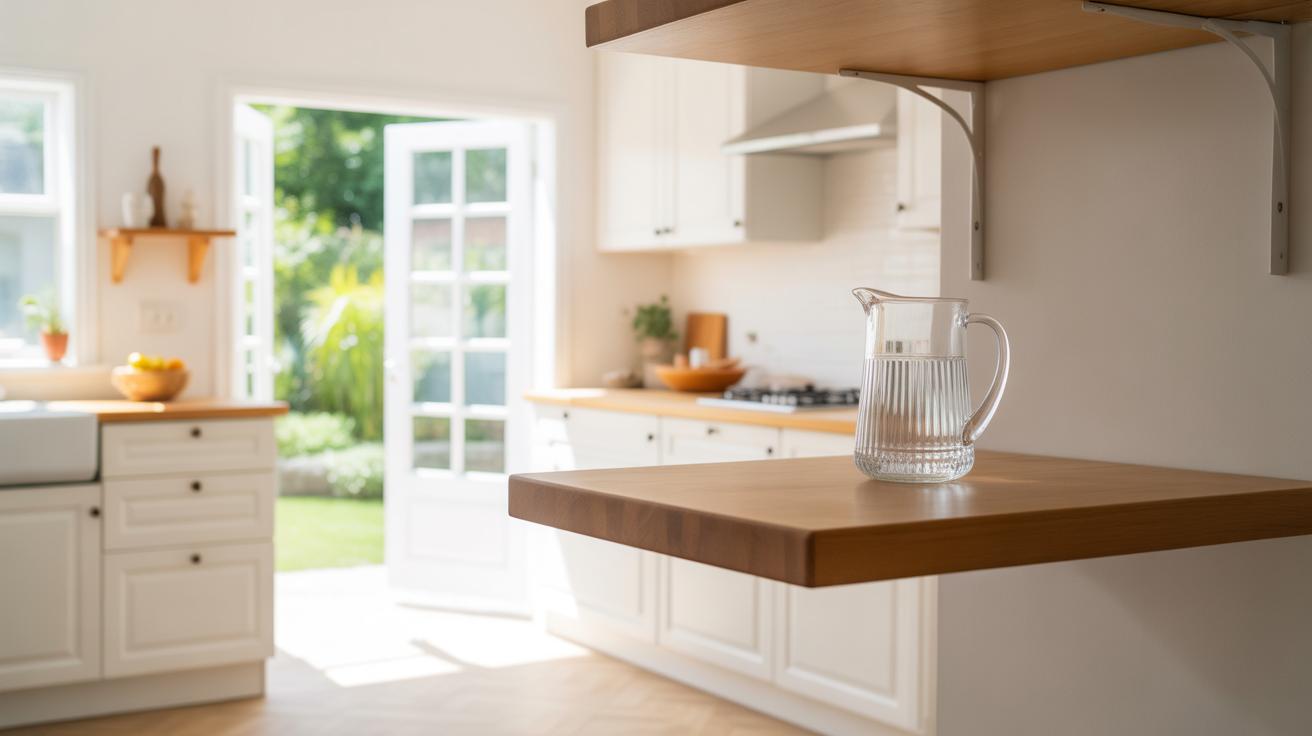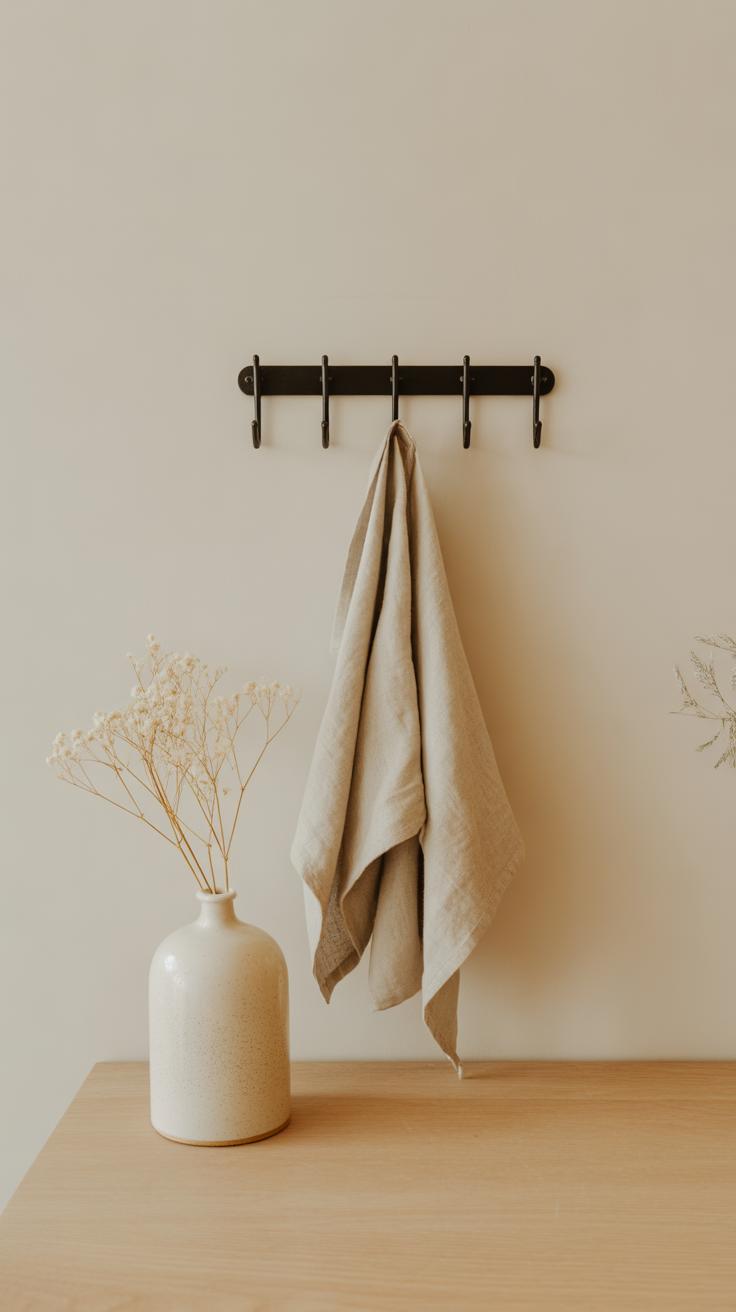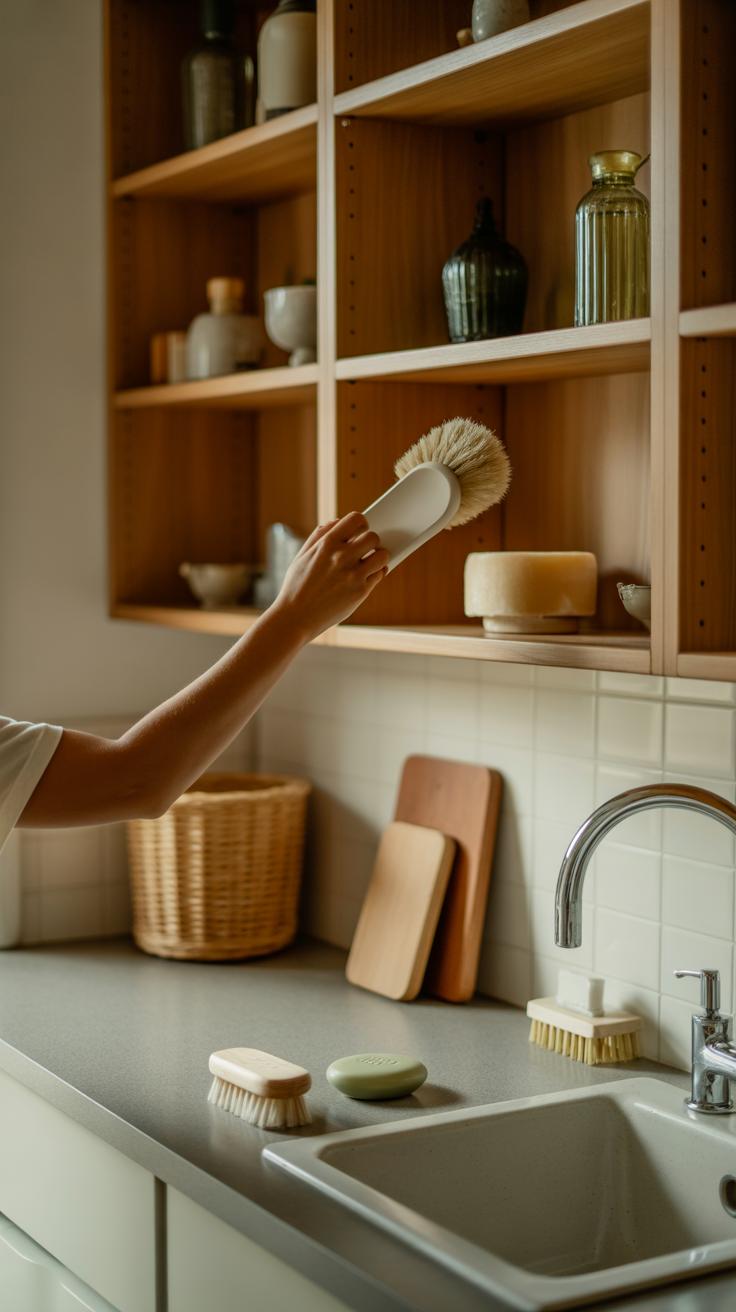Introduction
The Japandi style combines elements of Japanese and Scandinavian design to produce spaces that are simple, functional, and warm. This style mixes the clean lines and minimalism of Scandinavian design with the natural elements and refined simplicity found in Japanese interiors. In kitchens, Japandi brings a peaceful, clutter-free environment that focuses on natural materials and light.
In this article, you will explore practical ideas to design a Japandi kitchen. We will look at colors, materials, layout, storage solutions, lighting, and accessories. By the end, you will know how to create your own minimalist and warm Japandi kitchen that feels inviting and calm.
Choosing Colors for Your Japandi Kitchen
Picking the right colors for a Japandi kitchen means leaning into softness and subtlety. You probably want your space to feel open and calm, and that often means neutral and muted tones work best. Think gentle beiges, soft greys, off-whites, and earthy shades that don’t scream for attention. These colors help balance warmth with minimalism — the quiet that so defines Japandi.
Don’t overlook the role of contrast, though. You could add darker wood accents or charcoal details to ground the look without overwhelming it. A splash of muted green or pale blue can bring in just enough life, almost imperceptibly—something that feels natural rather than forced.
Texture plays into color perception as well. Matte finishes tend to keep things feeling quiet and understated, especially on walls or cabinetry. Versus glossy surfaces, which might feel too flashy or out of place. It’s worth testing a sample in your kitchen’s actual light before committing.
Choosing soft, natural colors doesn’t mean everything has to blend perfectly. Slight variations in tone, warmth, or brightness create a lived-in feel. You might even find that a mix of warm and cool neutrals works better than one uniform shade. What really matters is how the colors make you feel in the space—calm, centered, and maybe a bit cozy.
Have you noticed how some kitchens feel like they breathe? That’s often down to a gentle palette done right. Maybe your ideal Japandi kitchen will be the one where color invites you to stay, without demanding all your attention.
Choosing Colors for Your Japandi Kitchen
Picking colors for a Japandi kitchen means leaning towards calmness and simplicity, but it’s not just about blandness or fading into the background. Neutral and soft tones—off-whites, beiges, soft grays, and muted pastels—work well because they create a quiet, soothing space that feels open and light. These shades let natural light bounce around without overwhelming the senses, which is key if you want a kitchen that invites you to slow down.
You might wonder why pastels, which can sometimes feel too sweet or flashy, fit here. It’s about choosing the muted kind—faint, almost dusty hues that whisper, not shout. They add a soft touch that breaks monotony while staying aligned with Japandi’s minimal mood.
Contrast matters in this subtle environment, but it’s tricky. Slapping on dark colors willy-nilly can wreck the flow. Instead, try incorporating darker woods or black accents sparingly—think handles, light fixtures, or maybe a countertop edge. These choices anchor the space, giving the eyes places to rest without dominating the palette. It’s like a gentle punctuation mark in a quiet sentence.
Have you noticed how these few darker elements can suddenly make soft colors feel more intentional and deliberate? It’s odd, but without contrast, the neutral tones can sometimes feel flat or unfinished. Using contrast just right can make your Japandi kitchen feel both cozy and visually interesting, all while keeping its essential calm. The balance is subtle, but worth experimenting with.
Natural Materials to Use in Japandi Kitchens
Natural materials like wood, bamboo, and stone are central to creating that warm, textured feel in a Japandi kitchen. They bring an organic touch that contrasts nicely with minimalist shapes and clean lines. Without these materials, the space might feel too cold or sterile, which is not what Japandi is about.
Wood and Bamboo Choices
When it comes to wood, lighter tones usually work best—think oak, ash, or maple. These types give your kitchen a soft, natural glow without overwhelming the simplicity. Pine, too, is affordable and blends well, though it can be a bit softer and marks easier. Bamboo, on the other hand, adds subtle texture and is surprisingly durable. I’ve seen bamboo used for everything from cabinet fronts to flooring, and it honestly changes the whole vibe—makes things feel fresh but grounded. Sometimes you might want contrast, mixing warmer woods with cooler bamboo tones, or vice versa. It’s not always clear-cut which will look best until you live with it for a bit.
Stone and Textural Elements
Stone surfaces offer that quiet sturdiness Japandi craves. Granite and soapstone countertops are popular choices, but don’t overlook limestone or concrete if you want a softer edge. Textured tiles can add necessary depth on backsplashes or kitchen walls without cluttering the look. Rough surfaces provide a nice tactile break from sleek cabinets and smooth wooden finishes, but they need careful selection; some textures feel too harsh and quickly tire the eyes. The balance between smooth and tactile is subtle and perhaps a little personal—what feels cozy to one might seem rough to another.
Do you want your kitchen to feel like a retreat or just a functional space? The natural materials you pick play a surprisingly big role in answering that. It’s tempting to go for the prettiest stone or fanciest wood, but sometimes keeping it simple and honest feels best. After all, warmth in Japandi comes from imperfections as much as from choice.
Creating a Functional Minimalist Layout
Designing a Japandi kitchen means focusing on simplicity without sacrificing comfort or usability. The layout should feel open, but not sparse—enough breathing room for movement, yet all essentials within easy reach. It’s tricky, really. Too much space can feel cold, but clutter breaks the calm.
Start by clearing the floor plan. Avoid unnecessary counters or islands that interrupt the flow. A linear or L-shaped layout often works best, especially in smaller areas. Keeping walking paths wide enough to move without bumping into anything maintains that peaceful vibe.
Open and Clutter-Free Spaces
Open doesn’t mean empty shelves or bare countertops. It means carefully editing what stays and what goes. You might keep only the daily essentials visible, while stashing away others in neat drawers. Objects should have purpose and place.
Try to limit décor to natural, subtle pieces that echo the materials you’ve chosen. This focus helps keep distractions away and preserves openness. Have you noticed how just leaving some space around an object can make it feel more intentional? Guess that’s part of the Japandi approach.
Work Triangle and Efficiency
The kitchen work triangle—sink, stove, fridge—still plays a key role, even here. Japandi style isn’t about cramming everything close, but about respecting a natural workflow that feels intuitive and relaxed.
Position these three points so you move smoothly between them without detours or tight squeezes. For example, placing the stove slightly apart from the sink might seem odd, but if the path between them is clear and direct, it actually adds balance.
This layout respects both function and form, letting you work calmly without excess movement or visual noise. After all, simplicity doesn’t mean sacrificing how well the kitchen works for you.
Smart Storage Solutions
In a Japandi kitchen, every item should have a place. Clutter disrupts the calm, so smart storage becomes more than a convenience—it’s a necessity. You want your kitchen to feel open, yet all essentials easy to reach. This balance isn’t always simple, but thoughtful storage ideas help keep things tidy and accessible.
Hidden Storage Options
Think about pull-out drawers for pots and pans—they tuck everything neatly away but give quick access when needed. Hidden cabinets with doors that blend into the cabinetry keep surfaces clean and look sleek. Minimalist handles or even handle-free push mechanisms add to the clean lines Japandi demands. I once installed finger-pull cabinets; the subtlety meant no handles interrupting the natural wood grain. It felt quiet, almost unfinished at first, but that simplicity keeps the focus on the materials and light.
Open Shelving with Purpose
Open shelves aren’t off-limits, but they require restraint. Display only what you use and love—like a few stoneware bowls or glass jars with pantry staples. Too much spills into clutter. Open shelves can also introduce warmth, breaking the hardness of cabinets with natural textures. When I tried this, leaving just a couple of wooden trays and some green plants made the kitchen feel cozy without chaos. The question is—what belongs on display, and what is better hidden? It’s a bit of a balance, and one that might shift as your needs change.
Choosing Lighting for Warmth and Clarity
Lighting in a Japandi kitchen isn’t just about making sure you can see—it sets the mood. You want light that feels soft but clear, warm yet somehow fresh. Natural light plays a key role here. If your kitchen has windows, don’t block them with heavy drapes or bulky furniture. Instead, lean toward sheer curtains or keep window treatments minimal. Reflective surfaces like light wood or subtle quartz countertops can help bounce light around, making the space feel more open and calm.
Layered lighting brings depth. Think ambient lights for overall glow, task lights over workspaces, and subtle accents to highlight textures or plants. Pendant lights with simple shapes and warm bulbs often work well. Under-cabinet lighting is practical but also adds soft illumination that feels cozy—perfect for those quiet mornings or late-night snacks. It’s tricky: too bright, and the kitchen loses that gentle Japandi vibe; too dim, and you lose clarity. Finding the balance is a little like tuning a radio, you just try and feel it out.
Selecting Appliances that Fit Japandi Style
When it comes to choosing appliances for a Japandi kitchen, the goal is to keep things simple and unobtrusive. You want devices that don’t shout for attention but rather blend naturally into the space.
Minimalist Appliances
Look for appliances with clean, straight lines and shapes that avoid unnecessary details or curves. Think simple forms—rectangles or squares rather than ornate designs. I’ve noticed how some sleek ovens or refrigerators with flat fronts and touch controls seem to melt into the background rather than dominate it. Avoid gadgets with flashy buttons or excessive textures; subtlety is key.
Sometimes, choosing smaller, compact appliances suits the style better too. They keep the countertop less cluttered and maintain that calm feeling you want in a Japandi kitchen.
Color Coordination and Integration
Colors play a surprisingly big role here. Most Japandi kitchens favor neutral tones—soft whites, muted blacks, grays, or earthy browns. Appliances in these shades can harmonize with cabinetry and countertops instead of standing apart.
If possible, consider panel-ready appliances that can be hidden behind matching cabinetry. This way, your fridge or dishwasher disappears, reinforcing that quiet, cohesive look. Other times, choosing matte finishes or wood-textured fronts helps appliances blend in quietly.
Sometimes you might wonder if matching colors too closely makes a space feel sterile, but subtle differences in tone or texture often add just enough warmth. It’s a delicate balance, and, honestly, a bit of trial and error can help you find what feels right for your kitchen’s personality.
Decor and Accessories that Enhance Japandi Kitchens
In a Japandi kitchen, the challenge is to add personality without creating clutter. You want to keep things simple but still make the space feel lived in and warm. One easy way is through simple, functional decor that doubles as everyday items.
Simple and Functional Decor
Think about integrating a few well-chosen plants; a small fern or a sprig of bamboo can bring life without overwhelming. Ceramics play a big role too—imperfectly glazed bowls or mugs offer a subtle handmade feel that fits perfectly. I like using plain, neutral-colored kitchenware as decoration—stacked plates or a wooden cutting board leaning against the wall create interest while staying useful. It’s tempting to go for bold pieces, but restraint really matters here. You want these little touches to echo the calm mood of the whole kitchen rather than shout for attention.
Choosing Textiles and Small Details
Textiles can add warmth in a subtle way. Linen towels with soft natural tones or gently worn rugs soften the space and invite comfort. While you might think a few textured pieces could crowd the minimalist look, they usually deepen it if chosen carefully. I’ve found that using textiles lets you play around a bit—sometimes switching colors or fabrics with the seasons. It’s a quiet way to personalize without clutter. And those small, thoughtful details, like simple wooden spoons or minimalist utensil holders, quietly pull everything together.
Maintaining Your Japandi Kitchen
Daily Habits for a Tidy Kitchen
Keeping your Japandi kitchen feeling calm and warm means staying on top of small tasks every day. Try clearing countertops right after cooking—don’t leave dishes or utensils out longer than necessary. Wiping surfaces with a soft cloth and mild cleaner keeps natural materials looking fresh without extra effort.
Organizing as you go makes a big difference too. Returning tools to their proper spot helps avoid clutter build-up, which—if you’re honest—is the enemy of minimalism. You might find it strange at first, but making these little habits part of your routine eases cleaning later on.
Some days are busier than others, so forgiving yourself when things aren’t perfect feels natural. Just ask: can I put away what’s out right now? If yes, then good enough. Japandi is about balance, not rigidity.
Long-Term Care for Materials
Wood, stone, and natural fibers give your kitchen life, but they ask for gentle care over time. For wood, wiping with a damp cloth followed by a soft dry one usually works fine. Occasionally, a bit of natural oil can help preserve its warmth and prevent drying, but don’t overdo it—too much can leave a sticky film.
Stone surfaces do best with neutral pH cleansers. Avoid harsh chemicals that could dull their natural texture. Sometimes, stone needs resealing every few years—something many overlook until stains appear. You might wonder if this maintenance interrupts the minimalist vibe, but it’s really about respect for material honesty.
Textile elements like linen napkins or woven baskets benefit from gentle hand washing or air drying to keep their texture intact. These small rituals slow down wear and subtly prolong the inviting feeling Japandi kitchens aim for.
Conclusions
Japandi kitchen design is about more than just looks; it offers a way to create a kitchen space that promotes ease and comfort. By using natural materials like wood, clean lines, and soft color tones, you invite warmth and simplicity into your cooking area. Thoughtful storage and lighting keep the kitchen functional and bright.
With a Japandi kitchen, you have a place that helps you focus on cooking, eating, and spending time with loved ones. The balance of Japanese and Scandinavian design can make your kitchen feel like a peaceful retreat. Use these ideas to create a kitchen where you enjoy every moment.


